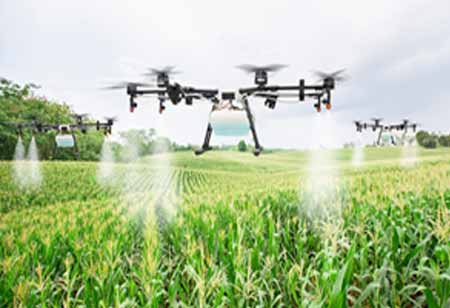Thank you for Subscribing to Agri Business Review Weekly Brief
Indoor Farming Techniques for Maximizing Yield
Indoor farming represents a revolutionary advancement in agriculture, enabling year-round production of high-quality crops in controlled environments.

By
Agri Business Review | Tuesday, June 11, 2024
Stay ahead of the industry with exclusive feature stories on the top companies, expert insights and the latest news delivered straight to your inbox. Subscribe today.
Indoor farming in Europe utilises artificial lighting, HVAC systems, and advanced nutrient delivery strategies to optimise crop yield and minimise water waste.
FREMONT, CA:Indoor farming represents a revolutionary advancement in agriculture, enabling year-round production of high-quality crops in controlled environments. However, optimising yield within these settings demands a meticulous and strategic approach.
Mastering the Environment: Light, Temperature, and Humidity
Plants grow under specific conditions of light, temperature, and humidity. In Europe, where natural sunlight can be scarce, replicating these ideal conditions is crucial for optimal plant growth.
Light Spectrum and Intensity
Unlike natural sunlight, European indoor farms commonly use artificial lighting, predominantly LEDs. Modern LED technology provides precise control over the light spectrum, allowing growers to tailor it to the specific needs of each crop stage. Research in Europe is advancing the development of LED systems that adjust light intensity and spectrum throughout the growth cycle. These systems mimic natural dawn-to-dusk transitions, thereby optimising photosynthesis.
Temperature Control
Maintaining optimal temperatures is essential for plant health and growth. European indoor farms often utilise advanced HVAC systems to ensure consistent temperatures. Techniques such as thermal stratification, which involves creating zones with varying temperatures to meet the needs of different crops, are also being explored to enhance efficiency.
Humidity Management: Humidity levels significantly impact plant transpiration and nutrient uptake. European growers use humidifiers and dehumidifiers to achieve the ideal balance. Recent advancements include fogging systems that create a fine mist around the plants, maximising humidity while minimising the risk of fungal diseases—a common issue in high-humidity environments.
Nutrient Delivery Strategies: Precise nutrient delivery is critical for most indoor farming utilising soilless mediums like hydroponics or aeroponics. Europe is addressing this challenge through several innovative approaches:
Precision Nutrient Delivery: European farms are increasingly adopting automated fertigation systems that deliver customised nutrient solutions directly to plant roots. This ensures plants receive precisely what they need at each growth stage, minimising waste and nutrient uptake, thus leading to better yields.
Advanced Nutrient Formulations: Ongoing European research focuses on developing improved nutrient formulations tailored to specific crops and growing conditions. These formulations consider essential minerals and factors such as plant stress levels and disease susceptibility.
Monitoring and Adjustments: It is crucial to regularly monitor plant health and nutrient solution composition. European growers leverage advanced sensors and data analysis tools to track these metrics and make real-time adjustments to the nutrient delivery system, ensuring optimal plant growth.
Pruning and Training for European Efficiency
Pruning and training techniques are employed to optimise plant growth patterns and maximise yield within the confined space of an indoor farm. Some popular methods used in Europe include:
Topping and Pinching: These techniques involve removing the terminal bud (topping) or lateral shoots (pinching) to encourage bushier growth and improve light penetration to the lower parts of the plant. They are particularly beneficial for leafy greens and herbs.
Trellising and Staking: Providing vertical support structures for vining or climbing plants, such as tomatoes or cucumbers, maximises vertical space utilisation and enhances air circulation, reducing disease risk.
Light Deprivation for Flowering
European growers employ light deprivation techniques for crops that require specific light cycles to trigger flowering. These methods induce flowering by creating periods of darkness to mimic the natural photoperiod, leading to higher fruit or seed production.
European indoor farms are advancing innovation, continually advancing technology and techniques to maximise yield. There is a strong emphasis on sustainable practices, with many farms incorporating renewable energy sources such as solar power to reduce their environmental impact. Additionally, ongoing research focuses on developing closed-loop systems that minimise water waste and enhance resource efficiency.





